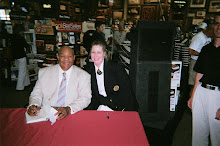
WHITE ANIMALS
https://blogger.googleusercontent.com/img/b/R29vZ2xl/AVvXsEibVfkYs-dn63ecTvqcF9DrrQ8IYDwL_9a-zlNNbhWSSTBWq3NdfE_HKrNXdyuj2hppUjq-Og-WaxObKoeFFOCcJ_fBKd9z9PSWVwszIwCrbYS5abheym-fVeo8GDzvH25tyGbwb-8J4ZA/s400/b-book.jpg
EXCERPT
http://www.messybeast.com/albinism/albino-index.htm
ALBINO ANIMALS AND BIRDS
Albinism is due to various gene mutations that affect the production of normal pigmentation. True (amelanistic) albinos lack melanin and are white with no markings and with unpigmented pink eyes. Partial (blue-eyed) albinos have some residual pigmentation. There are various degrees of patchy albinism (piebaldism) due to localised mutations in skin cells. Temperature dependent albinos have residual colour on cooler parts of the body i.e. Siamese cats where pigment develops on the head, tail and legs, but not on the warmer parts of the body.
Bluish-grey anerythristic albinos lack the red colour. Axanthic albinos lack the yellow colour. The actual colour and pattern of these animal depends on what other colours are in the pattern. Tyrosinase-negative albinos lack tyrosinase (an enzyme which synthesises melanin) in their cells; this usually produces a pale yellowish or cream animal with pink-eyes. The more common Tyrosinase Positive albino cannot synthesise melanin, but can synthesise tyrosinase, giving a fawn or lavender (platinum) colour.
Leucism is often mistaken for albinism. Leucistic animals, such as white lions, are white or very pale, with dark eyes and some pigmentation, for example ghost markings. Chinchilla is sometimes mistaken for albinism, but is caused by a different mutation that affects the distribution of pigment on the hair shaft. White tigers are chinchilla. Other mutations also cause white animals; some of the animals pictured here (white peacocks) are white, but not albino.
Some of the photos of white, albino and pied animals on these pages are from the early 1930s encyclopaedias "Wonders of Animal Life" (edited by J A Hammerton) and "Wonderland of Knowledge" (edited by Ernest Ogan). Some of those specimens were photographed in captivity and are now preserved in the Rothschild Zoological Museum.
Up until the late 19th Century it was common practice for naturalists and explorers to shoot and preserve unusual specimens. Not till the 20th Century did photography become a practical alternative. The majority of the museum taxidermy specimens on these pages are from the Walter Rothschild Zoological Museum, Tring, England and the Natural History Museum, South Kensington, London, England.
See also: Colour Mutation Glossary
http://www.messybeast.com/genetics/mutant-bigcats-terms.html
`````````````````````````````````````````````````````````````````````````````````````````````````````````````````````
http://www.messybeast.com/albinism/albino-index.htm
`````````````````````````````````````````````````````````````````````````````````````````````````````````````````````
ALBINO BEARS
ALBINO CANIDS
ALBINO DEER
ALBINO FELIDS
ALBINO HUMANS
ALBINO KANGAROOS & POSSUMS
ALBINO MUSTELIDS & VIVERRIDS
ALBINO PRIMATES (NON-HUMAN)
ALBINO REPTILES & CRUSTACEANS
ALBINO RODENTS, LAGOMORPHS & PORCUPINES
ALBINO SQUIRRELS
ALBINO WALLABIES
WHITE ELEPHANT
ALBINO BLACKBIRDS & ROBINS
ALBINO BIRDS OF PREY
ALBINO BUNTINGS & YELLOWHAMMERS
ALBINO CUCKOOS
ALBINO FINCHES
ALBINO/PIED CROWS & ROOKS
ALBINO/PIED JACKDAWS & MAGPIES
ALBINO PHEASANTS & PARTRIDGES
ALBINO SEABIRDS
ALBINO SHOREBIRDS: PLOVERS, CURLEWS, SNIPE
ALBINO SPARROWS & STARLINGS
ALBINO SWALLOWS & MARTINS
ALBINO THRUSHES, REDWINGS & FIELDFARES
ALBINO WATERFOWL 1 - DUCKS & MOORHENS
ALBINO WATERFOWL 2 - RAILS & CRAKES
ALBINO WOODCOCK
ALBINO/WHITE EMUS AND RHEAS
WHITE PEAFOWL
Some of the black and white photos of albino and pied animals are from the early 1930s encyclopaedia "Wonders of Animal Life" edited by J A Hammerton and from "The Science of Life" (c1929) by HG Wells, Julian Huxley & GP Wells. Some of these individuals were photographed prior to 1930 in captivity and may have gone to the Rothschild Zoological Museum when they died hence they may also be among the colour photos on other pages.

No comments:
Post a Comment